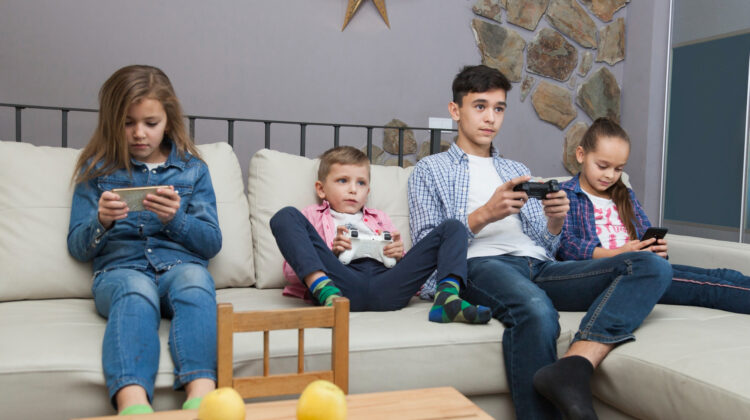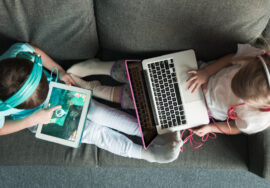
Screen Time vs. Play Time: The 2025 Approach to Balanced Child Development
Introduction: Striking the Right Balance
In today’s technology-driven world, screens have become an integral part of children’s daily lives. From online learning platforms to interactive games, digital devices can enhance education and creativity. Yet, they also compete with the irreplaceable benefits of active, imaginative play.
Parents in 2025 face the challenge of ensuring their children reap the benefits of technology without sacrificing physical activity, social interaction, and creative exploration. Achieving this balance is crucial for child health & wellness and overall development.
Understanding the Impact of Screen Time
While screens can provide educational value, excessive use can lead to a variety of issues, including:
- Reduced physical activity and increased risk of childhood obesity
- Eye strain and disrupted sleep patterns
- Shortened attention spans
- Limited face-to-face social skills
- Overstimulation from constant exposure to digital media
Experts now recommend that screen time be purpose-driven—focused on learning, creativity, or meaningful entertainment—rather than endless passive consumption.
The Benefits of Play Time for Child Development
Play is more than just fun—it is a vital component of healthy growth. Both structured and unstructured play support:
- Physical Health: Running, jumping, and climbing help develop strength, coordination, and endurance.
- Cognitive Development: Puzzles, building blocks, and imaginative role-play stimulate problem-solving and creativity.
- Social Skills: Group play teaches cooperation, conflict resolution, and empathy.
- Emotional Regulation: Play provides an outlet for stress relief and self-expression.
For optimal child health & wellness, daily active play should be as much a priority as education and technology use.
2025 Guidelines for Screen Time vs. Play Time
Modern recommendations encourage balance rather than complete avoidance of screens:
- Ages 2–5: No more than 1 hour of high-quality screen time per day.
- Ages 6–12: Limit recreational screen use to 2 hours daily, with breaks and offline activities.
- Teens: Encourage self-regulation and screen-free periods to promote healthier habits.
Play time should be incorporated into every day, ideally for 1–3 hours, with a mix of indoor and outdoor activities.
Strategies for a Balanced Daily Routine
Creating a balanced routine can help children naturally limit their screen time while enjoying more physical and creative play.
1. Schedule Device-Free Hours
Set clear times during the day when all screens are turned off, such as before school, during meals, and one hour before bedtime.
2. Introduce Engaging Alternatives
Encourage hobbies that draw kids away from screens, like art, reading, gardening, or cooking.
3. Prioritize Outdoor Play
Take advantage of parks, playgrounds, and sports programs to boost physical activity and social interaction.
4. Make Play a Family Activity
Join your children in active play—whether it’s a board game, a backyard ball game, or a bike ride.
5. Use Technology Mindfully
Select apps, games, and shows that have educational or skill-building value, and co-view when possible to encourage discussion.
The Role of Parents in Modeling Healthy Habits
Children often mimic the habits of adults in their lives. Parents who maintain a balanced relationship with their own devices send a powerful message. By demonstrating regular physical activity, enjoying offline hobbies, and setting boundaries with screens, parents can lead by example in promoting child health & wellness.
Using Technology to Encourage Physical Play
In 2025, technology doesn’t have to be the enemy of active play. Many fitness-focused games, augmented reality experiences, and interactive sports apps encourage movement and coordination. Smart wearables for kids can gamify physical activity, tracking steps or challenges to make exercise exciting.
Products that Support Balanced Development
Affiliate-friendly child health & wellness products can help families maintain balance:
- Blue Light Blocking Glasses to reduce eye strain during screen use
- Outdoor Play Equipment such as trampolines, swings, or climbing sets
- Educational Board Games for offline cognitive development
- Activity Trackers to motivate daily movement goals
- Creative Craft Kits to spark imagination away from devices
These products make it easier for parents to guide children toward healthier daily routines.
Overcoming Resistance to Reduced Screen Time
Transitioning to a balanced lifestyle can be challenging, especially if children are accustomed to unlimited screen use. To ease the change:
- Involve kids in creating the schedule so they feel ownership over the rules.
- Replace screen time with equally appealing activities, such as cooking their favorite meal together or planning a family outing.
- Reward positive behavior with experiences, not extra screen time.
The Long-Term Benefits of Balance
Children who grow up with a healthy balance between screen time and play time are more likely to:
- Maintain a healthy weight and active lifestyle
- Develop stronger social skills and emotional resilience
- Perform better academically due to improved concentration and sleep quality
- Carry forward positive habits into adulthood
By fostering this balance, parents are investing in their children’s long-term physical and mental well-being.
Conclusion: Building Healthier Futures in a Digital World
In 2025, technology is here to stay, but so is the need for active, imaginative play. The goal is not to eliminate screens but to integrate them into a lifestyle that prioritizes child health & wellness through movement, creativity, and real-world connection.
With mindful limits, engaging alternatives, and supportive products, parents can help their children enjoy the best of both worlds—thriving in a digital age while growing up strong, healthy, and well-rounded.







